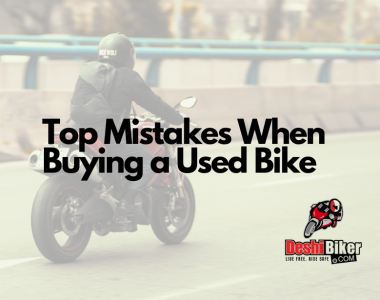Brakes are the most fundamental component for the safety of any two-wheelers, four-wheelers, etc. This segment plays a very important role in protecting the vehicle from any uncertain occurrence and stopping the vehicle on time. If the vehicle is a speedy horse then the brake is the whip to control and ride in the way. Brakes are not incorporated to stop the vehicle alone but also to prevent fatal collapses or accidents, it is a life-saving equipment in a sense. Conventionally there are two types of braking systems employed in cars and motorcycles; Disc brake and drum brake. We are about to explore these two types of braking systems and try to highlight both the advantages and disadvantages of these braking systems.

Drum Brake
Drum brake is the first invented braking system was developed in 1902, before this period vehicles used with handbrakes or wooden block brakes. After the innovation of the drum brake system, it became widely popular and all contemporary cars and bikes adopted this new braking system. Even in modern times, drum brakes are used in cars, motorcycles/scooters as well as heavy vehicles. Usually, modern bikes are incorporated with disc brakes in front but the rear section is still accompanied by the drum brake.
How Drum Brakes Work
Some components in the drum also rotate with wheels, when the brake padel gets pressed a set of shoes press against the drum. A steel cable builds a bridge between brake padel and wheel cylinder to exert pressure, by this pressure the shoes get essential force to press the drum. This process produces enough friction which leads the wheel to show down.
| Pros | Cons |
| Conventional drum brakes are manufactured with available low-cost components. | Overheating issue is one of the remarkable aspects of drum brakes, in hilly bumpy road conditions they may fail. |
| Drum brakes are designed with simple technology which easy to repair or service. | The brake shoes get rust and erosion soon which leads to misdeeds. |
| In lower force drum brakes get activated | Drum brakes consist of many parts if one of them stops functioning then the overall system is knocked down. |
| Drum brakes are low maintenance, and easily to maintain |

Disc Brake
Disc Brake is a new-age braking system incorporated in most modern motorcycles scooters and other vehicles. Initially, disc brakes were seen in performance-oriented motorcycles’ front wheels but nowadays disc brakes have been employed in both wheels and on lower cc commuter motorcycles. Having the same principle of friction, disc brakes result in superior open-air design and better braking force in action.
The Jaguar racing team adopted disc brakes for their car and won the title in 1953. MV Agusta used a pair of cable-actuated Campagnolo front disc brakes for Lambretta TV125 Series 3 for the first time in 1965. Later on, Honda introduced disc brake-equipped Honda CB750 into the mass market in 1969.
How Disc Brakes Work
Disc brake consists of two main parts a rotor and a caliper both are open in contact to air, the rotor is mounted to the wheel hub and the caliper slows down the wheel. In the caliper assembly, there are two pads on both sides of the rotor. Hydraulic fluid extracts pressure when the brake pedals get pressed, by moving inward the brake pads the rotor to showdown wheel in ease.
| Pros | Cons |
| Disc brakes provide more braking power for effective stopping of the bike even at high speed. | Disc brakes are expensive to manufacture. |
| The rotor is overheating resistance due to open contact with air. | It requires frequent fluid change. |
| Its components do not rust easily. |
In a nutshell, drum and disc brakes are not beyond deficiency but both have a potential presence in the automotive industry. Sometimes it depends on several factors to incorporate for a bike or scooter, to offer a budget-friendly motorcycle manufacturer has to adopt drum brake. Similarly to ensure proper performance a high-end motorcycle is equipped with disc brakes.
























